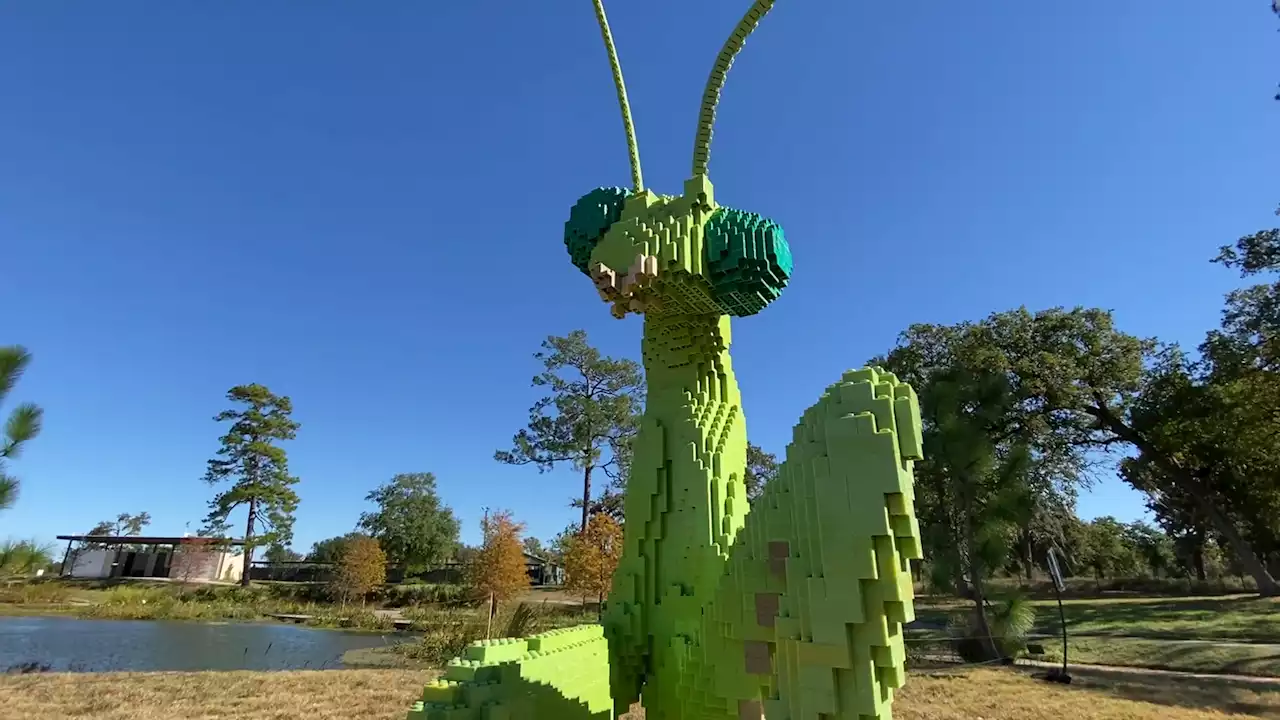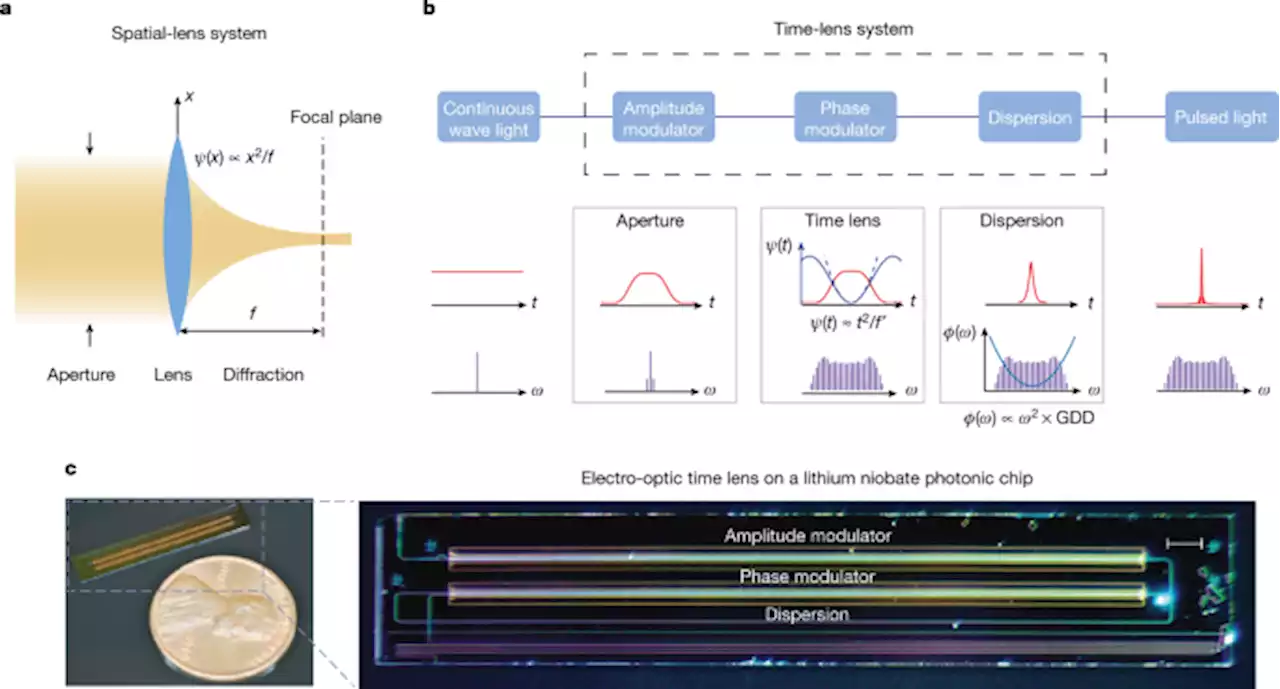Large-than-life Lego sculptures examine the relationship between humans and nature at Nature Connects.
Nature Connects is an award-winning art exhibition that explores the connection between man and nature through stunning Lego sculptures. Artist Sean Kenney wants his art to make people think about the importance of nature.
"I think that much like Lego bricks connect, everything in nature is interconnected in a very delicate balance and so I try to show that in my work," said Kenney. It took Kenney about 5,000 hours to design and put together all the pieces in the exhibit, which is about two-and-a-half years of full-time work. He said families that visit the exhibit can relate to building with Lego bricks in a way that many people can't relate to other pieces of art.
"I think if I can inspire kids to create great art with my work well... that's what art is for," said Kenney.
United States Latest News, United States Headlines
Similar News:You can also read news stories similar to this one that we have collected from other news sources.
 Artist connects people to nature using Lego bricksLarge-than-life Lego sculptures examine the relationship between humans and nature at Nature Connects.
Artist connects people to nature using Lego bricksLarge-than-life Lego sculptures examine the relationship between humans and nature at Nature Connects.
Read more »
 A First Look into the Nature of JWST/MIRI 7.7 micron Sources from SMACS 0723Until now, our knowledge of the extragalactic Universe at mid-IR wavelengths (| 5 microns) was limited to rare active galactic nuclei (AGN) and the brightest normal galaxies up to z~3. The advent of the JWST with its Mid-Infrared Instrument (MIRI) will revolutionise the ability of the mid-IR regime as a key wavelength domain to probe the high-z Universe. In this work we present a first study of JWST MIRI 7.7 micron sources selected with | 3 sigma significance from the lensing cluster field SMACS J0723.3-7327. We model their spectral energy distribution fitting with 13 JWST and HST broad bands, in order to obtain photometric redshifts and derived physical parameters for all these sources. We find that this 7.7 micron galaxy sample is mainly composed of normal galaxies up to z=4 and has a tail of about 2% of sources at higher redshifts to z~ 9-10. The vast majority of our galaxies have [3.6]-[7.7]|0 colours and very few of them need high dust extinction values (A_V=3 -6 mag) for their SED fitting. The resulting lensing-corrected stellar masses span the range 10^7-10^{11} Msun. Overall, our results clearly show that the first MIRI 7.7 micron observations of deep fields are already useful to probe the high-redshift Universe and suggest that the deeper 7.7 micron observations to be available very soon will open up, for the first time, the epoch of reionisation at mid-IR wavelengths.
A First Look into the Nature of JWST/MIRI 7.7 micron Sources from SMACS 0723Until now, our knowledge of the extragalactic Universe at mid-IR wavelengths (| 5 microns) was limited to rare active galactic nuclei (AGN) and the brightest normal galaxies up to z~3. The advent of the JWST with its Mid-Infrared Instrument (MIRI) will revolutionise the ability of the mid-IR regime as a key wavelength domain to probe the high-z Universe. In this work we present a first study of JWST MIRI 7.7 micron sources selected with | 3 sigma significance from the lensing cluster field SMACS J0723.3-7327. We model their spectral energy distribution fitting with 13 JWST and HST broad bands, in order to obtain photometric redshifts and derived physical parameters for all these sources. We find that this 7.7 micron galaxy sample is mainly composed of normal galaxies up to z=4 and has a tail of about 2% of sources at higher redshifts to z~ 9-10. The vast majority of our galaxies have [3.6]-[7.7]|0 colours and very few of them need high dust extinction values (A_V=3 -6 mag) for their SED fitting. The resulting lensing-corrected stellar masses span the range 10^7-10^{11} Msun. Overall, our results clearly show that the first MIRI 7.7 micron observations of deep fields are already useful to probe the high-redshift Universe and suggest that the deeper 7.7 micron observations to be available very soon will open up, for the first time, the epoch of reionisation at mid-IR wavelengths.
Read more »
Pathogen spillover driven by rapid changes in bat ecology - NatureNature research article: Pathogen spillover driven by rapid changes in bat ecology
Read more »
 The Eiffel Tower Comes to Life with 10,001 Piece LEGO SetForget a plane ticket, bring home and build a historic landmark as LEGO debuts a very pricey and impressive Eiffel Tower Ideas set
The Eiffel Tower Comes to Life with 10,001 Piece LEGO SetForget a plane ticket, bring home and build a historic landmark as LEGO debuts a very pricey and impressive Eiffel Tower Ideas set
Read more »
 Integrated femtosecond pulse generator on thin-film lithium niobate - NatureA femtosecond pulse generator is realized using an electro-optic time-lens system integrated on a lithium niobate photonic chip, capable of tunable repetition rates and wavelengths.
Integrated femtosecond pulse generator on thin-film lithium niobate - NatureA femtosecond pulse generator is realized using an electro-optic time-lens system integrated on a lithium niobate photonic chip, capable of tunable repetition rates and wavelengths.
Read more »
 Preserve and Restore Nature to Prevent Future Pandemics: Studies\u0022Right now, the world is focused on how we can stop the next pandemic,\u0022 said one scientist. \u0022Unfortunately, preserving or restoring nature is rarely part of the discussion.\u0022
Preserve and Restore Nature to Prevent Future Pandemics: Studies\u0022Right now, the world is focused on how we can stop the next pandemic,\u0022 said one scientist. \u0022Unfortunately, preserving or restoring nature is rarely part of the discussion.\u0022
Read more »
